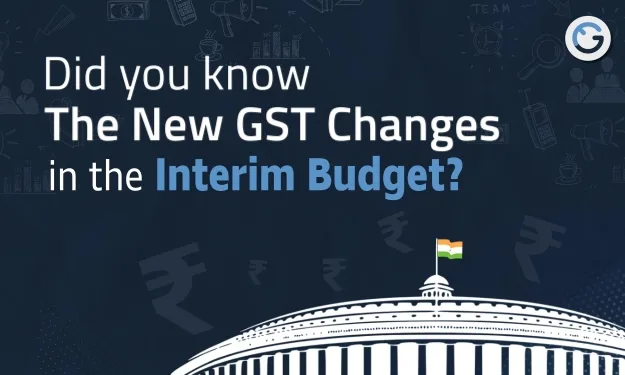In a bid to provide much-needed relief to taxpayers and businesses navigating the complex landscape of the Goods and Services Tax (GST) regime, Finance Minister Nirmala Sitharaman presented the Interim Budget 2024 on February 1, 2024.
While major GST overhauls necessitate approval from the GST Council, the budget offers a glimpse into the roadmap for the next phase of GST evolution, outlining key highlights and expectations.
Simplifying GST Slabs: Streamlining Tax Structures
Responding to a long-standing demand from GST stakeholders, the budget announces a commitment to simplify the GST rate structure. Currently featuring four main slabs of 5%, 12%, 18%, and 28%, along with zero-rated and exempted categories, the government aims to rationalize these slabs. The goal is to bring more items under lower slabs, reducing the compliance burden and easing the tax incidence for consumers.
Widening the GST Horizon: Inclusion of Excluded Sectors
A significant shift on the horizon is the potential inclusion of sectors previously excluded, such as petroleum and electricity, under the GST ambit. Currently burdened by multiple taxes from central and state governments, this move seeks to create a uniform and simplified tax system. Beyond this, it aims to enhance revenue collection and make input tax credit more accessible for businesses.
Tailored Relief for MSMEs and Small Traders: Navigating Challenges
Acknowledging the vital role of Micro, Small, and Medium Enterprises (MSMEs) and small traders, the budget proposes tailored measures to address pandemic-induced challenges. Anticipated measures include easing compliance norms and filing requirements, extending due dates, simplifying forms, allowing quarterly returns, and offering specific tax benefits and incentives.
Additionally, the budget envisions facilitating digitalization and automation of GST processes for MSMEs and small traders through initiatives like e-invoicing, real-time reporting, and online verification of returns.
Embracing Digitalization: Transforming GST Processes
Underlining the significance of digitalization in enhancing the efficiency and transparency of the GST system, the budget introduces initiatives to expand the scope of e-invoicing. Currently mandatory for businesses with turnovers exceeding Rs 50 crore, this move aims to include more taxpayers and transactions.
The budget also suggests a new system for real-time reporting and verification of GST returns, enabling faster processing, tax refunds, and reducing the scope for errors and frauds. Automation takes center stage with the proposed generation and reconciliation of GST returns based on data captured from e-invoicing, e-way bills, and other sources, eliminating manual intervention and redundancy.
Addressing Sector-Specific Challenges: Targeted Reforms
The budget addresses sector-specific GST challenges affecting manufacturing, services, and export sectors. Examples include reducing GST rates on essential goods and services like medicines, medical equipment, education, and hospitality to provide relief to consumers and sectors hit by the pandemic.
Moreover, the budget seeks to resolve the inverted duty structure issue, where GST rates on inputs surpass those on outputs, leading to the accumulation of input tax credit and cash flow problems for manufacturers. Streamlining the refund process and mechanism for exporters is also a priority, ensuring timely and hassle-free disbursal of refunds.
Conclusion: Charting the Future of GST in India
In conclusion, the Interim Budget 2024 sets a positive tone for the future of GST in India, signaling the government’s commitment to simplify, rationalize, and make the system more taxpayer-friendly. GST stakeholders can look forward to enhanced clarity and certainty within the GST regime, anticipating a positive impact on their businesses and overall growth.
As businesses prepare to navigate these changes, staying informed and adapting to the evolving GST landscape will be crucial for continued success. The government’s dedication to simplification and transparency paves the way for a promising trajectory in the GST regime in the years to come.

